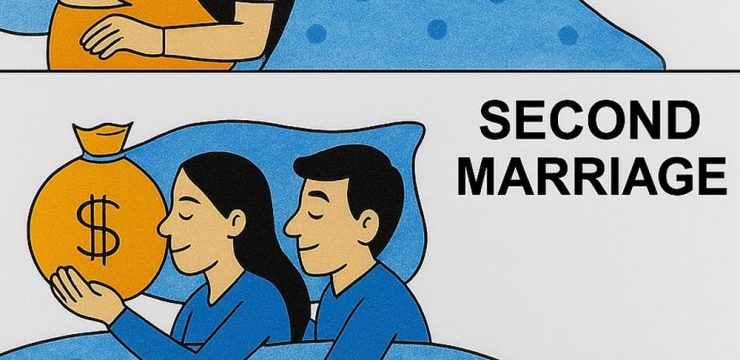It often starts with a burning itch or a tingling patch of skin that seems harmless at first. Maybe you think it’s an allergy, a rash, or just irritation from dry weather. But within days, those tingling sensations can turn into painful blisters that spread across your body like fire. What you may not realize is that this is more than just a rash—it could be shingles, a condition that millions of adults worldwide experience each year. And the most unsettling part? The virus behind it may have been lying dormant inside your body for decades, waiting silently for the right moment to strike.

What Exactly Is Shingles?
Shingles, medically known as herpes zoster, is a viral infection caused by the reactivation of the varicella-zoster virus—the same virus that causes chickenpox. When you had chickenpox as a child, your body fought off the visible symptoms, but the virus didn’t completely disappear. Instead, it retreated into your nerve cells, hiding deep inside the body, where it can stay inactive for years or even decades. For reasons doctors don’t always fully understand, the virus can “wake up” later in life and resurface as shingles.
When this happens, it typically affects one area of the body—often one side of the face, torso, or back. The nerve pain it causes can be sharp, burning, or stabbing. Unlike a regular rash, shingles attacks the nervous system, and the discomfort it brings can linger long after the skin heals.
Why Does It Reactivate?
Several factors can awaken this sleeping virus. The most common trigger is aging. As people get older, their immune system naturally weakens, making it harder to keep dormant viruses under control. This is why shingles is most common among adults over 50.
Stress—both physical and emotional—also plays a major role. High stress levels release hormones that can suppress immune function, giving the virus the opportunity to reactivate.
A weakened immune system due to chronic illnesses like diabetes, cancer, or HIV, or medications such as chemotherapy and long-term steroids, also increases the risk.
And finally, a history of chickenpox is a key factor—because only those who’ve had chickenpox carry the virus in their system. When it reawakens, it causes shingles, not chickenpox again.
It’s important to note that shingles itself isn’t highly contagious, but the fluid from its blisters contains the varicella-zoster virus. Direct contact with those blisters can cause chickenpox in someone who has never had it or hasn’t been vaccinated.
How Does It Begin? Recognizing the Symptoms
Shingles can be tricky to recognize in its early stages. The first symptoms often mimic something mild, such as fatigue or the flu. You might feel tired, achy, or feverish, with no idea what’s coming next.
A few days later, the first clear sign appears: painful, tingling skin on one side of the body. The area might feel extremely sensitive to touch, as if even light clothing causes pain. Soon after, a red rash develops, followed by clusters of fluid-filled blisters. These blisters eventually burst, scab over, and heal within two to four weeks.
The pain, however, can linger much longer. In some people—especially older adults—the nerve pain continues for months or even years after the rash is gone. This complication, known as postherpetic neuralgia, can be severe and life-disrupting.
Other symptoms may include:
-
Itching or burning sensations.
-
Headaches or light sensitivity.
-
Fatigue and low-grade fever.
-
Difficulty sleeping due to pain.
If you notice these symptoms, especially localized pain followed by a rash on one side of your body, it’s crucial to see a doctor right away. Early treatment makes a huge difference.
Is There a Cure?
Unfortunately, there’s no permanent cure for shingles. However, there are effective treatments that can reduce pain, speed up recovery, and prevent complications if started early.
Antiviral medications such as acyclovir, valacyclovir, or famciclovir work best when taken within the first 72 hours after the rash appears. They help stop the virus from multiplying and can lessen the severity and duration of symptoms.
Pain relief is also important. Over-the-counter medications like acetaminophen or ibuprofen can ease mild discomfort. For more severe pain, doctors may prescribe stronger painkillers, nerve pain medications, or corticosteroids.
Home remedies can provide comfort as well: cool compresses, calamine lotion, and loose clothing can help soothe irritation. Getting enough rest and maintaining hydration are equally essential for recovery.
Prevention and Protection
While anyone who’s had chickenpox is at risk, the good news is that shingles is preventable. The most effective way to lower your risk is through vaccination.
The CDC recommends the shingles vaccine for adults age 50 and older, even if they’ve already had shingles in the past. The vaccine not only helps prevent the disease but also reduces the severity if it does occur.
In addition to vaccination, a healthy lifestyle plays a key role in prevention. Eating a balanced diet rich in vitamins, getting adequate sleep, managing stress, and exercising regularly all support a strong immune system that can keep the virus in check.
It’s also wise to avoid scratching or touching shingles blisters if you develop them. This prevents spreading the virus and reduces the risk of bacterial infections.
The Hidden Lesson: A Virus That Waits in Silence
Shingles serves as a powerful reminder that the viruses we encountered in childhood don’t always stay gone. The varicella-zoster virus waits quietly inside the body, sometimes for half a lifetime, before resurfacing when the immune system weakens.
For some people, shingles means a few weeks of discomfort. For others, it brings long-term nerve pain that can make everyday activities—like getting dressed or sleeping—extremely difficult. That’s why early detection and medical care are critical. The sooner you recognize the symptoms, the faster you can act.
If you’re over 50, consider talking to your doctor about the shingles vaccine. And no matter your age, take care of your health, manage stress, and listen to what your body tells you.
Because shingles doesn’t just appear out of nowhere—it’s a virus that’s been with you all along, quietly waiting for the moment to strike. Protecting yourself today means peace of mind tomorrow.
Share this information with your loved ones so they can stay informed and protected too. Awareness and prevention are the strongest shields against a virus that never truly leaves.





